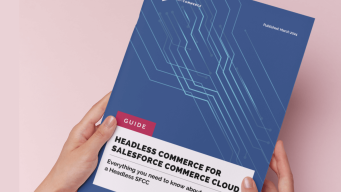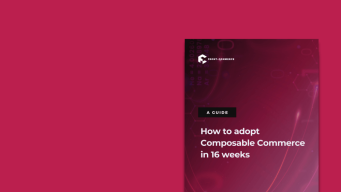Front-Commerce vs. Salesforce Commerce Cloud
Go headless with Front-Commerce to reduce your TCO, accelerate time-to-market, and deliver exceptional customer experiences.
Headless architecture streamlines development and facilitates rapid deployment of new features and integrations without disrupting existing Salesforce Commerce Cloud infrastructure.
Streamlined development processes, reduced maintenance overheads, and the flexibility to choose best-of-breed solutions contribute to overall cost savings.
A hybrid or progressive approach to headless commerce allows you to maintain the functionality of your SFCC back-end while building a modern headless front-end. This extends the value of your existing Salesforce Commerce Cloud investment while unlocking the advantages of headless commerce.
Beyond web and mobile, headless empowers you to create seamless shopping experiences across any touchpoint, including social media and voice assistants.
Headless storefronts allow for independent front-end innovation without impacting core Salesforce Commerce Cloud functionality. This translates to faster customization and quicker time-to-market for new features.
Headless frontends are often lighter weight, leading to faster load times and a smoother user experience across devices. This keeps customers engaged.
Decoupling from a monolithic platform allows integration of best-of-breed solutions ensuring compatibility with emerging technologies. Adding new feature is simpler with a headless setup, as the frontend can connect to various backend services and APIs as needed.
Headless frontends enable features like server-side rendering, boosting your organic search ranking and website traffic.
Is your e-commerce solution dragging down your performance and driving up your costs? Running your e-commerce on a monolithic platform such as Salesforce Commerce Cloud can be attractive at first. But as your business grows, these initial benefits can be overshadowed by a number of hidden costs.
| Feature | Front-Commerce Headless Frontend | SFCC Monolithic Platform |
| Flexibility | Effortlessly adapt with best-of-breed solutions | Limited adaptability, complex changes |
| Maintenance & Scalability | Isolated components, simpler updates, easy scaling | Complex updates, potential ripple effects, limited scalability |
| Omnichannel Power | Enables true omnichannel fulfillment (BOPIS, etc.) | May limit omnichannel functionality |
| Management | Decentralized, requires integration expertise | Centralized, familiar approach |
| B2B Functionality | Integrations required, may need custom solutions | Robust B2B features built-in |
| Catalog & Brand Control | Requires integration management for consistency | Centralized control over product catalogs |
| Considerations | – Requires integration expertise | – Less flexibility for future needs – Potential maintenance challenges |
Browse our latest resources to discover how to migrate your Salesforce Commerce Cloud platform to Headless & Composable Commerce, frontend-first.

EBOOK
Dive deeper into the compatibility of Headless and Salesforce Commerce Cloud, and how to get started.

ARTICLE
Successfully navigate your migration to headless commerce with SFCC.

GUIDE
With a headless storefront you gain control over both systems, allowing a fast migration to a composable platform.
